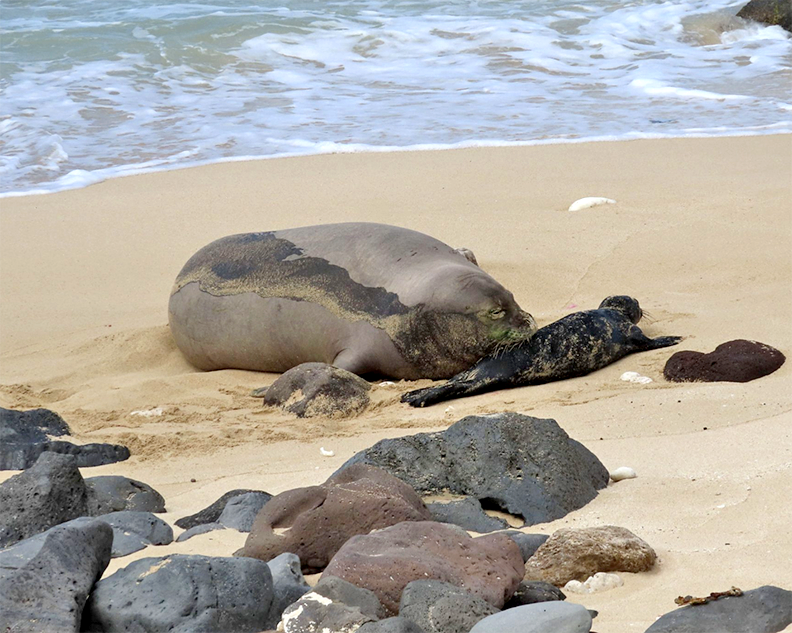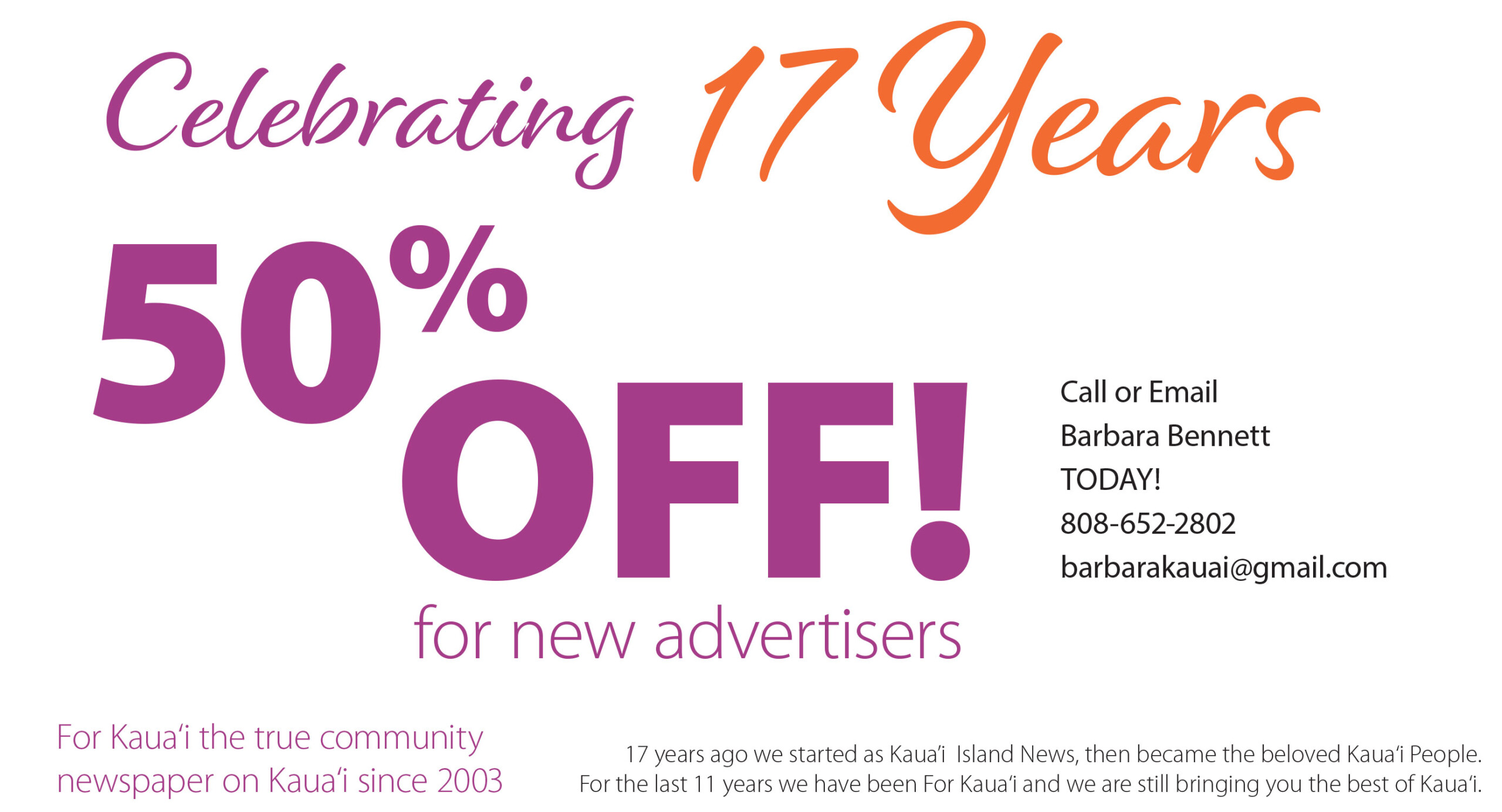By Jan TenBruggencate
 History is where you find it, and on Kaua‘i, you don’t need a book.
History is where you find it, and on Kaua‘i, you don’t need a book.
There are beaches all around the island that provide windows into life on Kaua‘i in generations past.
I can remember beachcombing the shore below Mahelona Hospital, between Kapa‘a and Kealia.
There’s a lot of stuff mixed in with the sand and stones there. The area is park-like these days. No buildings, the bikepath, a public lookout area, and a wide spot in the road where people stop to eat lunch or to park their cars while they go fishing.
But it used to be actively used. There was a schoolhouse on the shoreline. And the plantation railroad ran by there, hauling cane, hauling work crews, and even hauling kids and families to the beach or to shopping in town.
The pieces of red clay brick strewn along the strand represent old buildings long demolished. But one day, I came across a chunk of black rock with shiny facets.
I couldn’t figure out what it might be until I looked up, saw the old coastal plantation railway bed, and made the connection. Some of the old plantation trains were diesel powered, but some of them operated on steam, made by burning coal.
This black rock was a chunk of coal, probably fallen from an overfilled coal car.
I know a spot in the Lihu‘e area near a long-abandoned plantation camp, where people threw their rubbish. Most of the tin cans have long since rusted away, and the organic materials have rotted. What’s left are the 1890 versions of today’s Tupperware: glass bottles.
Little bottles, big ones, soda bottles, sake bottles, opium bottles.
You get a similar glimpse at old regional dumps. The one at Ahukini has recently been cleaned up, but others still exist, including the one near Port Allen, at the famous Glass Beach.
Today, if you watch the crews work at the county landfill, the dominant product seems to be plastic in its various formulations. But a century ago, the trash represented what you found at the local plantation and village stores – and a lot of that was packaged in glass.
All that smashed glass, eroding out of the old landfill’s hillside into the rolling surf, turns into sand-smoothed bits of green and blue and white – and rarely red glass.
Over time it wears into smaller and smaller pieces, becoming almost indistinguishable from the sand except by color.
A few generations from now, the situation will be different. People beachcombing may find bits of green and blue and white, and even red, but it won’t be glass.
It will be fragments of plastics, from all the bottlecaps, toothbrushes, cigarette lighters, bottles, fishing floats and all the other trash that our society dumps into the oceans.
That’s one of the messages of landfills and beaches. We can find our history on and in them. But they also remind us that right now, we’re making the next generation’s history. And it’s not always nice.
- Jan TenBruggencate is a Kaua‘i based writer and communications consultant.
Discover more from ForKauaiOnline
Subscribe to get the latest posts to your email.





Leave a Reply